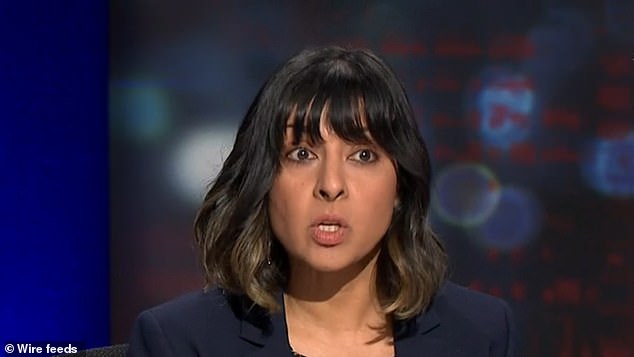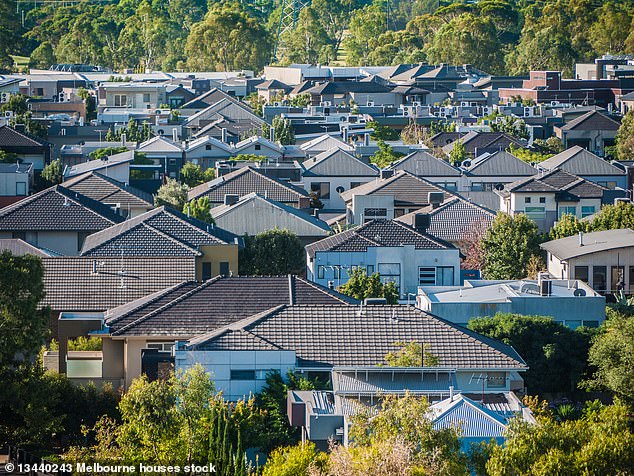Dire immigration warning that could cost Australia $200billion
A housing expert has exposed the real flaws in Australia’s housing problem, claiming that if the government were to restrict migration to solve the crisis, the economy would lose $200 billion over 30 years.
Dr Aruna Sathanapally, Chief Executive of the Gratton Institute, was a panellist at Monday night’s Q&A, discussing the housing crisis with Housing and Homelessness Minister Clare O’Neil, Shadow Minister Michael Sukkar and financial journalist Alan Kohler.
Responding to a question whether migrants are to blame for the housing crisis, Dor Sathanapally said the root of the problem is the lack of housing.
‘So we can do it and reduce migration, but we shouldn’t pretend that that’s not a costly way to solve the housing problem, when the source of the problem is “The problem is that we have failed to build enough houses for the population that we always knew we would have at this point,” she said.
According to Dr. Sathanapally, companies would say that reducing migration is expensive because they would not be able to find the workers they need. In addition, universities would be faced with one of the country’s most successful export industries.
“The health care sector will tell you it’s expensive because it impacts our elderly care and childcare,” she said.
‘If we don’t have our housing system in order and we can’t house the necessary workers and the necessary workforce, then all kinds of problems arise elsewhere.
‘So even a 25,000 reduction, as the coalition has proposed, in our skilled labour migration, we calculate would cost us over $200 billion over 30 years. That’s because migrants pay more in taxes than they consume in services.’
A housing expert has revealed the real failure of Australia’s housing problem, saying if the government were to cut migration to solve the crisis, the economy would lose $200 billion over three decades (stock image)

Dr Aruna Sathanapally (pictured), CEO of the Gratton Institute, was a panelist on Monday night’s Q&A, which discussed the housing crisis
In June it was revealed that Australia was accepting more than 10,000 immigrants a week, despite Anthony Albanese pledging to halve the number of new arrivals next year.
More than 1,500 new migrants arrive every day, or 60 migrants every hour, according to new data from the Australian Bureau of Statistics.
Australia is set to take in more than 500,000 immigrants in 2024 alone as its population faces a growing housing and cost of living crisis.
An additional 4,200 homes are needed each week to keep up with current growth, but fewer than 1,000 homes are currently being built.
The sobering immigration figures came just weeks after the prime minister pledged his government would halve immigration within a year.
Peter Strachan, chairman of Sustainable Population Australia, called for an immediate reduction in immigration.
“We understand the calls for an end to immigration, given the serious impact that the addition of a million migrants in two years has had on the housing market, but also on infrastructure and services,” he said.
‘Over the past 20 years, immigration has been far too high, based on the false claim that we don’t have enough skilled workers. The resulting population growth has created more skills shortages than it has filled.
‘The real reasons for mass immigration are to keep wages down and house prices up. This is not in the interests of Australians, nor in the interests of migrants who are among the most disadvantaged in terms of both jobs and housing.’

An additional 4,200 homes are needed each week to keep up with current growth, but fewer than 1,000 are currently being built.
Mr Strachan urged that net overseas immigration be limited to 70,000 a year.
Australia is expected to have a population of 45 million by 2070, after its population grew by 75 percent in just a few generations.
“We can keep the refugee intake at 20,000 and still have room for the highly skilled migrants that employers want to sponsor, along with their family members,” Strachan said.
‘However, Australia should stop importing people on points-based visas as these people typically don’t get skilled jobs.
“The only reason the government is doing this is to get immigration above the levels employers want. This drives up consumption and GDP, but productivity and GDP per capita go down.”
